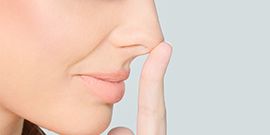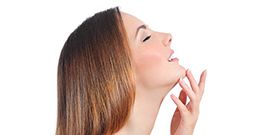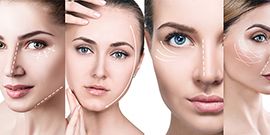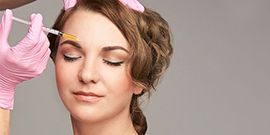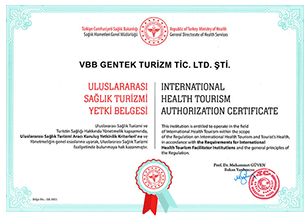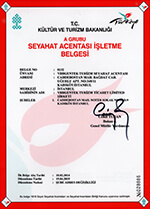Rhinoplasty (Nose Surgery)
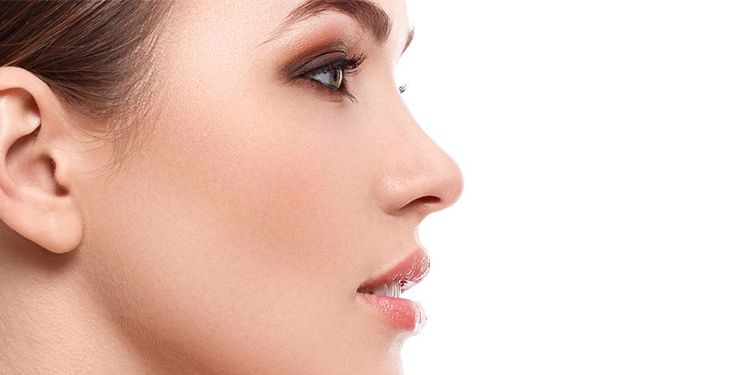
The nose is located in the middle of the face and is the first striking structure on the face. The ratio of the nose to the other structures on the face significantly affects its aesthetic appearance.
For this very reason, rhinoplasty, i.e. nasal aesthetic surgery, has become one of the most commonly used cosmetic surgery procedures. During the same operation, cartilage or bone curvatures, if any, can be corrected so the patient can have a healthy and aesthetic nose.
What is Rhinoplasty?
The nose is located in the middle of the face and is the first striking structure on the face. The ratio of the nose to the other structures on the face significantly affects its aesthetic appearance. If a person is upset by one or more of the following problems about the shape of his/her nose, s/he may consider surgery:
- Arched nose
- Curved nose
- Drooping nose tip
- Long nose tip
- Wide and large nose tip
- Narrow nose
- Flattened nose tip
Rhinoplasty, which is the most commonly performed operation in aesthetic surgery, is an operation to improve one's nose appearance that upsets him/her. During this procedure, deviated bone and cartilage that prevent the patient from breathing are also corrected.
The Importance of Nose in Facial Beauty
How should an ideal nose be?
The nose is expected to look symmetrical, proportionate, harmonious with the rest of the face, and natural. A beautiful and attractive nose should be well proportioned. A nose in proportion with our face and within itself is important for facial aesthetics.
The goal of rhinoplasty is to provide the patient with a symmetric, natural-looking nose in proportion with his/her face which performs its function a healthy way. A beautiful nose will also reveal other contours of the face.
How is rhinoplasty performed?
Types of rhinoplasty
Open Rhinoplasty
In open rhinoplasty surgery, the incision is applied to the area which is accepted as the middle pole of the nose. The nasal skin and then cartilage tissue are lifted from this incision site. Necessary procedures are performed depending on the nasal functions or disorders of the nose structure; cartilage tissue and skin are replaced back on the nasal middle pole again and the operation is completed by closing the incision. Open rhinoplasty is the preferred method of surgery because it provides a clear view of all structures and the best result during surgery.
Closed Rhinoplasty
In closed rhinoplasty, various incisions are applied depending on the process to be made on the nose, but the incisions are applied through the nostril and are not visible from the outside. The swelling developing after the operation resolves more rapidly in closed rhinoplasty surgery.
When the two techniques are compared, in open rhinoplasty, the surgeon has more control over the interior of the nose and therefore can perform a clearer reshaping, but the healing process may be slightly longer. A mild scar, though subtle, is likely to remain. In closed rhinoplasty, the surgeon's experience is very important. In this technique, the healing process is both more comfortable and shorter for the patient. In addition, since it's performed through the nostrils, it does not leave any scar.
How long does rhinoplasty take?
Although general anesthesia is recommended for the comfort of the patient, this operation performed under either local or general anesthesia, depending on the case, takes 2-3 hours on average.
Is rhinoplasty a painful procedure?
Most patients say that they did not have as much pain as they expected after rhinoplasty. The medications applied to the nose during the surgery prevents pain after surgery.
Before Rhinoplasty
Who can have rhinoplasty?
Female patients older than 16 years of age and male patients older than 18 years of age are eligible to undergo rhinoplasty. In aesthetic operations, physical characteristics, age, expectations, anatomical structure and existing health problems of the patient should be carefully evaluated and the appropriate method should be selected for patient. The operation should be patient-specific.
Doctor Selection
Rhinoplasty operations should be particularly performed by cosmetic surgeons who have a holistic approach to face and are capable of repairing functional structure of the nose.
Things to consider before surgery
Before the operation, the patient should inform the surgeon and anesthesiologist who will perform the aesthetic surgery about all details about his existing medications and general health status. Before the operation, s/he must notify his/her surgeon of upper respiratory tract infections, fever, cough, sore throat, abdominal pain, flu, cold, cold sores s/he might have. Stop taking blood thinner medications, herbal teas, fish oil and avoid any special herbal cure applications 1 week before surgery. You're advised to limit smoking 2-3 weeks before surgery since smoking will have a negative impact on recovery process.
After Rhinoplasty
Issues to consider after the operation:
- Supporting the head with a pillow during the first two nights after rhinoplasty and sleeping in a vertical position as much as possible will minimize your risk of developing edema.
- Eating regularly and sleeping regularly help to speed up the healing process.
- Avoid strenuous activities or activities requiring bending for at least three weeks.
- Do not wear glasses for the first 4-6 weeks.
- Avoid exposure of nasal region to direct sunlight for at least 3 months. You're advised to wear a high-factor sunscreen or a protective hat for this purpose.
- Avoid swimming in the sea, pool or bathing in sauna for the first 4-5 weeks.
- Avoid drinking alcohol and smoking as they will have negative impact on recovery of sutures and prevent regeneration of tissues.
- Avoid blowing your nose in the first weeks.
Price of Rhinoplasty
The price of rhinoplasty varies by the hospital where the surgery will take place and the procedures to be performed. The operative time is prolonged in line with the nature of the procedure to be performed.
There is a difference between the pricing applied to a patient who will only have a correction of nasal tip and the pricing applied to a patient who will have both rhinoplasty and correction of breathing functions.
Various procedures including visible humps on the bridge, a previous rhinoplasty, making a new nose using a bone from the ribcage are subject to different prices.
What are the risks of rhinoplasty?
There is no surgery without any risk, but it is important to be operated by a surgeon who knows these risks well and can take precautions against them.
Frequently Asked Questions
Is it possible to perform concha and nasal obstruction operations concomitantly with rhinoplasty?
Conditions leading to nasal congestion and breathing problems such as concha and deviated septum can be corrected concomitantly with rhinoplasty.
What is nasal tip plasty?
Nasal tip plasty is applied to patients who do not have any problem such as a prominent bridge, curvature or humps on nasal dorsum and whose appearance can be corrected with a minor intervention on nasal tip.
Tip plasty, colloquially known as nasal tip esthetic surgery, is the name given to operations to correct esthetic problems such as drooping nasal tip, beaked nasal tip, widened nasal tip.
Tip plasty takes a short time and usually applied under local anesthesia. After the operation, the patient may develop a very mild swelling but usually does not develop any bruise. Its recovery period is much shorter than other nasal surgeries, and the person can resume normal activity immediately after a very short rest period.
What are the non-surgical rhinoplasty methods?
Nasal filling
Nasal filling, also known as non-surgical nasal esthetic application, refers to changes in the shape of the nose performed without surgical intervention. Filling materials which give volume to the skin, such as hyaluronic acid, are injected into the nasal region by appropriate techniques. In this procedure, nasal cavities, recesses, contour deficiencies and asymmetries are temporarily treated. It should be repeated at certain time intervals.
Nose tip botox
Botox can be applied intramuscularly to the tip of the nose where the nose is joined to the lip. As the muscle relaxes with the effect of botox, a relative increase is provided at the tip of the nose.
Lifting nose tip using thread
It is a procedure applied with sutures used in surgeries. This procedure does not provide long-term persistence as other applications.
Is it possible to correct septum deviation by plastic surgery?
Septum is a part of the nose covered with mucosa, which divides the nasal cavity into two parts from the middle and consists of cartilage in the front and bone at the back. Septum deviation, i.e. a physical disorder of the nose where this cartilage or bone part in nose midline leans to one side, is one of the causes of respiratory distress. This leaning may occur in the front or at the back. Passage on the side where this leaning occurs is narrowed, causing difficulty in breathing.
Concha and septum deviations can be operated on by plastic surgeons concomitantly with rhinoplasty.
What is nose filing?
Nose filing is a method used to reduce the height of the nasal ridge, usually in the case of aquiline noses. Using the file used during nasal esthetic operations, the dorsal height of the nose is brought down to the desired level.
Where the nasal hump is too high, at the surgeon's discretion, the excess part can be removed by filing or excision but filing the nasal hump section and bringing it to the desired level constitute a more controlled process.
Can sinusitis patients have nasal surgery?
Sinusitis patients do not have any contraindication to have a rhinoplasty.
Will there be any scar left after rhinoplasty?
In the open technique used in rhinoplasty, a small incision is made between the nostrils to perform the procedure so it is likely that a very mild scar is left in this part of the nose. Since wound healing varies from person to person, this scar does not appear to be the same in all patients. In open rhinoplasties performed by cutting at the right site, there will almost be no scar.
How long does the swelling and bruises take to heal after the surgery?
It is true that rhinoplasty operations performed in the past caused very intense swelling and bruising. But nowadays, by the courtesy of techniques and technological developments utilized, they are much less common. Precautions taken during surgery, operations performed without the use of tampons, post-operative cooling masks are very effective methods for preventing or minimizing swelling and bruising. The swelling and bruises that may occur despite all precautions taken and treatments performed depending on the tissue structure of the person and whether they are allergic or not completely resolve after a week or in ten days.
Does rhinoplasty cause loss of sense of smell?
Any aesthetic and functional interventions made during the operation are far from the part where the nose performs its smell function. In other words, no interventions, including incisions, etc., are made in that area so this operation does not affect the function of smell.
Only shortly after surgery, there will be a slight nasal congestion due to edema in the nose, which will affect the sense of smell to some extent until swelling subsides.
ABOUT SURGERY
Related Content
Tip plasty
Tip plasty is performed to deliver the desired look to the cartilage section in the front part of the nose without intervening in the nasal bone in patients with no deviation[...]
Read MoreNasal Filling
It is a non-surgical nose correction procedure for people who complain about the general appearance of their nose. Depending on the discomfort of the person, after this[...]
Read MoreFat Injection With Stem Cells
Nowadays, thanks to the developing technology, the excess fat removed from your body is enriched with your stem cells which have been isolated from that fat and injected to[...]
Read More